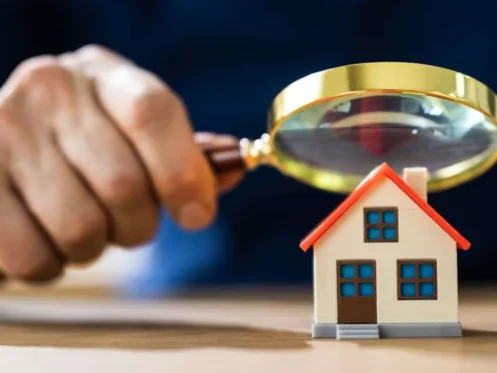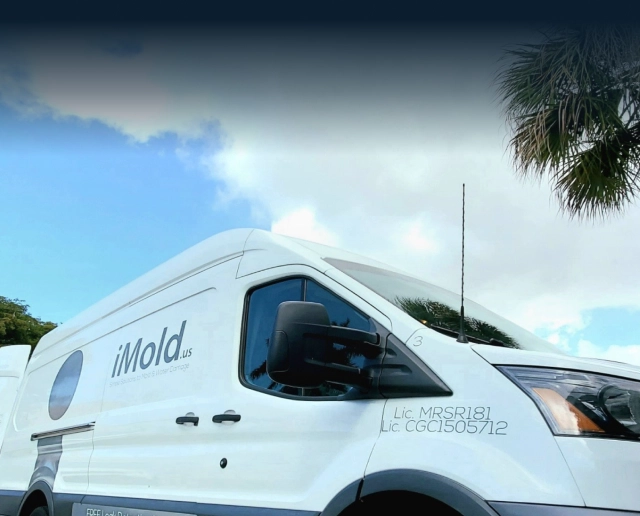Why Is Real Estate Mold Testing Important?
House hunting is exciting, but a lot goes into making a final decision. For example, a home inspection can tell you a lot, but one thing it might miss is mold. Some home inspections may include mold, but most aren’t trained in proper detection. Therefore, it’s important to get a separate mold inspection and real estate mold testing before deciding.
As we near the end of Florida’s rainy season, homes on the market may have a hidden problem that a normal inspection won’t find. With the current housing market, you might feel like you have to jump at the first opportunity. But, instead of feeling pressured to skip inspections, you’ll find that insisting on them can end up saving you money and a future headache.
What is a mold inspection?
The only reliable way to find whether your future home has mold is through a professional inspection. Companies like iMold are certified and trained in the latest mold detection tools. You can get a free visual inspection by certified experts so you can be certain whether there is mold present or not. Since this is Florida, there’s a good chance that a home might have mold present, especially behind walls and near plumbing. After confirmation from a mold inspector, they can refer you to a third party for real estate mold testing. If you do find mold, don’t get discouraged. The test will help you make a plan for mold remediation, and how involved that might be.
Why You Should Test
The presence of mold might be immediately concerning, but there’s no way to know until you get the mold tested. After your inspection, iMold will have a trusted third-party company test for what types of mold are in the home. Some molds are easier to remove or less harmful than others, so testing is the only way to know what course of action to take.
While a visual mold inspection is free, the testing will cost you. Because it’s not typically included in a home inspection, the seller has no obligation to pay. However, you can choose to pay for the testing and negotiate the removal if mold is found. If you decide to skip the inspection and testing altogether, you could be stuck with costly repairs and removal down the line. Mold can spread, cause illnesses, and tank your property value. Of course, you could choose to walk away from that home, but you’ll more than likely need to inspect another home during the house-hunting process.
What Now?
Once you’ve decided to go ahead with testing, there are some important things you should look out for during and after the real estate mold testing process. Several key factors determine how involved mold removal is.
- Location – Where was the mold found? Crawlspaces, attics, and walls are frequent culprits, but finding mold in other areas might indicate a more serious problem.
- Type – No mold is harmless, but some types can be dangerous. Testing will show the type of mold, and you can decide if it’s worth the hassle.
- Cause – Is there a leaky faucet? Does the landscaping slope toward the home? Knowing the source will let you know if it is a recurring issue.
Removal and Prevention
Did testing find mold in your dream home? If you want to move forward with the purchase, it’s important to remove the mold sooner rather than later. The seller might be willing to work with you to properly remove the mold as soon as possible. If that’s the case, you can contact iMold for 24/7 service. Failure to remove mold properly can have consequences for your property value and, more importantly, your family’s health. Lingering mold can cause respiratory problems in humans and pets with lasting effects.
Just because we live in a rainy area doesn’t mean that mold is inevitable. Knowing how to prevent mold from growing in your home will save a lot of frustration and money down the line.
- Areas like bathrooms and kitchens are full of appliances with the potential to leak and cause growth.
- Limit humidity by airing out your home. A breezy house keeps air moving and prevents mold.
- Inspect plumbing, walls, and roof for any leaks. Mold can grow fast, so catch it before it can grow.
Before You Buy
With iMold, an inspection is always free and with no obligations. Scheduling a mold inspection is one of the most important things you can do when considering new homes. Although it’s often forgotten, failing to do real estate mold testing can have lasting consequences on your health and wallet. Looking to schedule a mold inspection with iMold? We love to help Florida home buyers make more informed decisions! See what our customers say about our mold removal services here, or call with all your real estate and mold removal questions.
Find iMold on Instagram and Facebook for more tips and guides.

